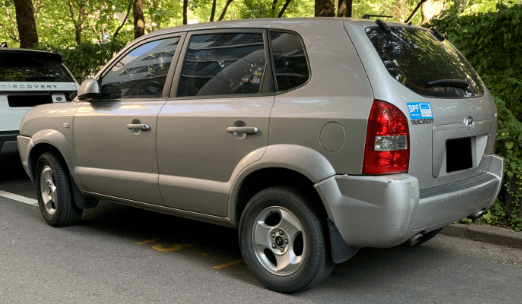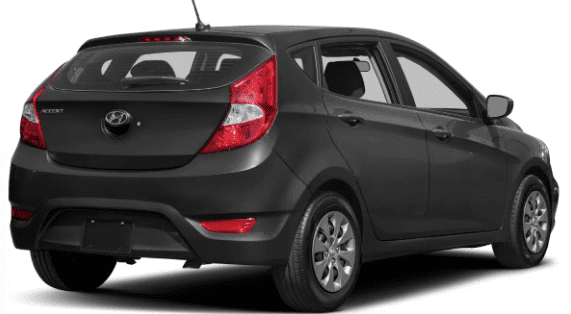[Top 5 Issues] Hyundai Equus Transmission Problems & Cost!
Last Updated on April 2, 2023 by Robert Wilson
Hyundai Equus transmission problems have been a cause for concern for many owners. The most problematic model seems to be the 2014 Hyundai Equus.
The automatic transmission is known to fail without warning and can lead to expensive repairs. In some cases, the transmission may need to be completely replaced.
Hyundai has issued a recall for the affected vehicles, but many owners are still experiencing problems.
Many drivers have reported issues with the Equus’ automatic transmission, reporting that it can be slow to shift gears or even get stuck in one gear. In some cases, the transmission may even slip out of gear while driving.
Most Common Hyundai Equus Problems
If you’re in the market for a used Hyundai Equus, there are a few common problems you should be aware of. Here’s a look at some of the most common issues reported by owners for the models of 2012, 2013 and 2014 years!
1. Transmission Problems: One of the most commonly reported problems with the Hyundai Equus is transmission related.
Some owners have complained of experiencing hard shifts, delayed engagement, and even complete transmission failure.
2. Suspension Issues: Another common problem with the Equus is suspension related.
Many owners have reported prematurely worn suspension components, resulting in poor ride quality and handling characteristics.
If you’re planning on test driving a used Equus, pay close attention to how it feels on the road.
If it feels rough or bouncy, chances are good that there may be some suspension work needed down the line.
3. Brake Issues: Yet another common problem plaguing the Hyundai Equus is brake related.
Some owners have reported premature wear of brake pads and rotors, as well as strange noises coming from the braking system.
4. Electrical Issues: A number of owner reports also mention various electrical issues with their Hyundai Equus models.
These range from intermittent starting problems to faulty navigation systems and everything in between.
In a nutshell, as with any used car purchase, be sure to have a qualified mechanic inspect the vehicle before finalizing your deal.
Issues Reported by User
| Common Issues | Complaints |
| Wheels & tires make the car ride rough in the 2011 Equus | 3 |
| Struts failed in the 2012 Equus | 2 |
| Lost all power while driving in the 2012 Equus | 4 |
| Day running lights don’t work in the 2014 Equus | 5 |
| Ehaust emits black soot in the 2012 Equus | 2 |
Hyundai Equus Reliability
There’s no question that Hyundai has come a long way in recent years. The Korean automaker has consistently produced reliable and affordable vehicles that have won over the hearts of American car buyers.
But can the same be said of Hyundai’s flagship luxury sedan, the Equus?
While there’s no denying that the Equus is a well-built and handsome car, some have questioned its reliability.
Consumer Reports gave the Equus a below-average reliability rating, citing problems with its infotainment system and body hardware.
Other reviewers have been more forgiving, praising the Equus for its comfortable ride and luxurious interior appointments.
Hyundai has also worked to address some of the early reliability concerns, issuing a number of recalls and service bulletins.
So what’s the final verdict on whether or not the Hyundai Equus is reliable? Only time will tell for sure, but our advice is to do your research before making any decisions.
To cut a long story short, read as many reviews as you can from both experts and everyday drivers, and make sure you’re comfortable with whatever decision you make.
2016 Hyundai Equus Review
The 2016 Hyundai Equus is a full-size luxury sedan that seats five passengers. It’s available in two trim levels: Ultimate and Signature.
The Ultimate trim comes with all the bells and whistles, while the Signature trim is a bit more subdued.
Both trims come with a 311-horsepower V8 engine, an eight-speed automatic transmission and rear-wheel drive.
Standard features on the Ultimate include adaptive suspension dampers, LED headlights, power-closing doors, heated and ventilated front seats (with 16-way power adjustments for the driver), a head-up display, navigation system, Lexicon 17-speaker premium audio system and much more.
The Signature trim comes standard with leather upholstery (heated and ventilated in front), 14-way power adjustment for the driver seat, blind spot monitoring with rear cross traffic alert and lane departure warning.
Both trims of the 2016 Hyundai Equus offer an impressive list of standard features, but the Ultimate really takes things to the next level when it comes to luxury amenities.
If you’re looking for a full-size sedan that offers plenty of space and all the latest tech gadgets, then the Equus should definitely be on your radar.
Equus Car Price
If you’re in the market for a new car, you might be wondering about the Equus car price. Here’s what you need to know about this luxury vehicle. The Equus is a high-end sedan that’s been on the market since 2008.
It’s available in two trim levels: the base model and the more expensive “S” version. Both trims come with a 4.6-liter V8 engine that produces 385 horsepower. The base model starts at $61,950, while the “S” trim will set you back $73,950.
That might seem like a lot of money, but it’s actually quite reasonable for a luxury car like this one. And when you compare it to other vehicles in its class, the Equus is actually quite affordable.
So if you’re looking for a luxurious and well-priced sedan, the Equus should definitely be on your list of options.
How Much Does It Cost to Fix a Hyundai Transmission?
The cost will vary depending on the severity of the issue and which Hyundai model you own, you can expect to pay several thousand dollars to have your transmission repaired or replaced.
Although, the average cost for Hyundai Equus Transmission Assembly Replacement is $817
However, if your Hyundai is no longer under warranty, then you will be responsible for paying for all repairs and replacement costs out-of-pocket.
To get an accurate estimate of what it would cost to repair or replace your Hyundai transmission, it’s best to consult with a qualified mechanic or transmissions specialist.
Are Transmission Flushes Really Necessary?
Most carmakers recommend transmission flushes at 30,000-60,000 miles and more frequently for severe driving conditions.
Many automakers have extended the drain interval for their newer vehicles equipped with lifetime fluids. However, even if you have a car with lifetime fluid, it’s still a good idea to flush your transmission every few years.
Here’s why: Over time, small particles of metal and other debris accumulate in the fluid as a result of normal wear and tear on the transmission components.
This can cause the fluid to become contaminated and may eventually lead to premature wear or failure of the transmission components. Transmission flushes help remove this debris and keep your transmission running smoothly.
In addition, fresh transmission fluid helps keep your transmission cool by lubricating the moving parts and providing a barrier against heat.
This is especially important in hot weather conditions when transmissions tend to run hotter than usual.
If you’re unsure about whether or not your vehicle needs a transmission flush, consult your owner’s manual or ask a qualified automotive technician for advice.
HYUNDAI BAD TRANSMISSION, REPLACE SHIFTING SOLENOID FIX TRANSMISSION
Conclusion
Hyundai Equus is a car that has been known to have transmission problems. The problem seems to be with the way the transmission is designed and built.
There have been reports of the transmission slipping and not being able to hold gears, especially when going up hills.
This can be a very dangerous situation as it can cause the car to lose power and stall. Hyundai has issued a recall for this problem and is working on a fix.
In the meantime, if you own a Hyundai Equus, it is important to be aware of this problem and keep an eye on your car’s performance.



